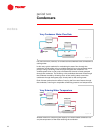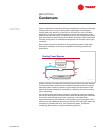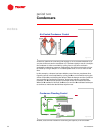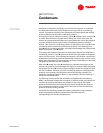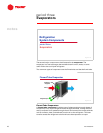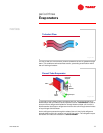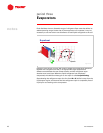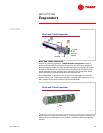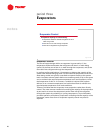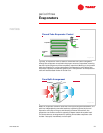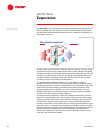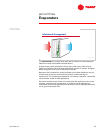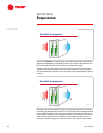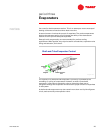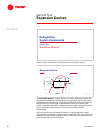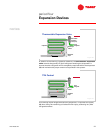
20 TRG-TRC005-EN
notes
period three
Evaporators
Evaporator Control
The rate of heat exchange within an evaporator is governed by (1) the
temperature difference between the refrigerant and the air or water being
cooled, (2) the flow rate of the air or water through the evaporator, and (3) the
flow rate of the refrigerant through the evaporator.
In comfort-cooling applications, it is necessary to balance the capacity of the
system with the ever-changing load. The flow rate and temperature of the air or
water being cooled are typically controlled to respond directly to the system
load. A constant-volume system delivers a constant quantity of air to the space
and, to maintain the required space temperature at all load conditions, varies
the temperature of this air. In contrast, a variable-air-volume (VAV) system
delivers air at a constant temperature and varies the airflow to maintain the
required space temperature at all load conditions.
These are variables that the evaporator must respond to rather than directly
control. The most common method of controlling the capacity of the evaporator
at part load is to control the temperature and/or flow rate of the refrigerant
through the system by unloading or cycling compressors. To provide stable
part-load operation and balance compressor unloading with the capacity of the
evaporator, some direct form of evaporator capacity control may also be
required.
Evaporator Control
I Evaporator capacity is influenced by:
K Temperature difference between refrigerant and air or
water being cooled
K Flow rate of air or water through evaporator
K Flow rate of refrigerant through evaporator
Figure 30



